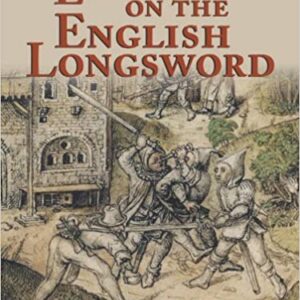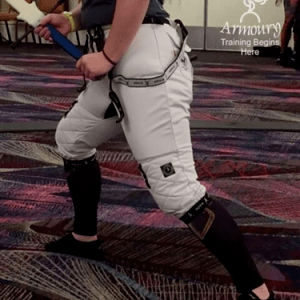Path of the Great Sword
These Practices of the Montante are training for the real thing, for these thirty-two rules will not only facilitate all the movements of the body, but in a manner they will cultivate an agility equal to a natural one in all fights. One who is well exercised in them could never find strange the place of the fight or the opposing arms, or even less the number of adversaries, assuming he has valor, skill, and fitting strength for the montante. With the admonition that no swordsman necessarily should do this or that rule, but rather he should take from them all what he best understands and that serves him to defeat his adversaries, linking one rule to another with such prudence that neither haste will confuse the memory he should have of them, nor lack of vigor reduce the activity with which he should perform them.
DOM DIOGO GOMES DE FIGUEYREDO, MEMORIAL DA PRATTICA DO MONTANTE, 1653
Bologonese Great Sword
Some important information about the utilization of a great sword comes from the Dadi, or more commonly Bolognese tradition of Italian fencing.
Opera Nova (“A New Work”) is a Bolognese fencing manual written by Achille Marozzo and printed in 1536. It contains information on the montante.
- The Complete Renaissance Swordsman: Antonio Manciolino’s Opera Nova (1531)
Giacomo di Grassi produced a manuscript in 1570 called Ragione di adoprar sicuramente l’Arme (“Discourse on Wielding Arms with Safety”). A section on the use of the great sword is included.
In 1589 Girolamo Lucino wrote and published Dialogo di Girolamo Lucino, da Casalmaggiore, del vso della spada (“Dialogue of Girolamo Lucino of Casalmaggiore on the use of the sword”) which covers the usage of a variety of weapons, including the great sword.
In 1628 Dom Diogo Gomes de Figueyredo composed Oplosophia e Verdadeira Destreza das Armas (“Hoplosophy and the True Skill of Arms”, MS Vermelho.nº.91) on the rapier and the Memorial Da Prattica do Montante (“Memorial of the Practice of the Montante”, MS 49.III.20.nº.21) in 1653.
Lastly we come to L’Arte maestra (“The Master Art”), a treatise written by Carlo Giuseppe Colombani and published in 1711.
You can read more biographical information about the authors of these source manuscripts at Wiktenauer,
Iberian Great Sword
Giovanni Antonio Lovino produced Modo di cacciare mano all spada (“Method of Putting Hand to the Sword”, MS Italien 959) in 1580. This manuscript can be difficult to locate so I am including a direct link to the plates at the Gallica. The manuscript covers a variety of weapons, including early montante techniques.
In 1599 Domingo Luis Godinho wrote a treatise on fencing entitled Arte de Esgrima (“On the Art of Fencing”) which included information on the montante.
- Iberian Swordplay: Domingo Luis Godinho’s Art of Fencing
Memorial Da Prattica do Montante (“Memorial of the Practice of the Montante”, MS 49.III.20.nº.21) is an Iberian fencing manual written by Diogo Gomes de Figueyredo in 1651. This is one of the most widely studied among HEMA practitioners of the montante.
The text is devoted to the use of the montante (Iberian greatsword); it states that the weapon is too dangerous to practice with a partner, and so it consists of a series of solo training exercises.
Francesco Alfieri published a number of different treatises during his lifetime but as pertains to the the great sword he published in 1653 a book of fencing titled L’arte di ben maneggiare la spada (“The Art of Handling the Sword Well”) which is predominantly about the rapier but included a section on the usage of the spadone.
You can read more biographical information about Dom Diogo Gomes de Figueyredo and Domingo Luis Godinho at Wiktenauer.
Spanish Great Sword
There is very little information available on Spanish handling of the great sword, but some material does exist.
Sometime around 1474 Jaime Pons de Perpiñan, a 15th century Spanish fencing master, published a manual of fencing which included material on how to utilize the montante although no surviving text is known to have survived to today it is believed to have influenced other masters.
A brief, anonymous Spanish notation recorded in a copy of Melchor Cano’s theological text De locis theologicis, libri duocecim… sometime in 1563. The notes describe the usage of the great sword. It is speculated to have been written by a student during his studies.
Sobre el arte de la esgrima (“On the Art of Fencing”) is a brief, anonymous passage on folio 184r of a Spanish manuscript (MS II/1579(2)) that dates to ca. 1580 and is one of the few sources for information about how to use a montante. A transcript can be read at Wiktenauer.
Sometime after 1599 Pablo de Paredes instructed Jehan L’Hermite in the usage of the montante, which he recorded a short section of in his memoirs.
In 1653 Francesco Fernando Alfieri produced a manual called L’arte di ben maneggiare la spada (“The Art of Handling the Sword Well”) which included a section on handling the great sword (spadone).
You can learn more information about Pablo de Paredes and Francesco Fernando Alfieri at Wiktenauer.
German Great Sword
Strangely there have yet to be any German language treatises known to have survived that specifically cover material for the great sword. This is strange because we have many texts related to the The Brotherhood of St. Mark (Marxbrüder) who had an Imperial monopoly on issuing certificates for ‘Master of the Long Sword’ (in this context implied to be a greatsword) .
Perhaps someone will eventually discover a source.
English Great Sword
The Additional MS 39564 is an English fencing manual apparently written by one J. Ledall between 1535 and 1550. The original currently rests in the holdings of the British Library in London, United Kingdom.
- Lessons on the English Longsword
A transcription of the sections related to usage of the great sword can be read at https://wiktenauer.com/wiki/Ledall_Roll_(Additional_MS_39564)
In 1617 The Schoole of the Noble and Worthy Science of Defence, was written by Joseph Swetnam, a member of the Company of Masters, who claimed to be the fencing instructor for Prince Henry Frederick. Included is material that covers the usage of the great sword. As the treatise is written in English it has been one of the more popularly studied sources for greatsword among English practitioners. A version in HTML has been released on the ARMA website located here.
You can learn more information about Joseph Swetnam at his biography page at Wikipedia.
PARTIAL BIBLIOGRAPHY
Late Medieval and Early Modern Fight Books: Transmission and Tradition of Martial Arts in Europe, 14th-17th Centuries (History of Warfare)
If you’d like to learn more information about historical fencing practices please check out our Learn HEMA page for a guide to learning about the historical weapon that interests you. You can also find more guides we’ve written about other topics at our Helpful Guides page.
Search
HEMA Resources Newsletter Signup
Signup to our newsletter for updates to new information, articles, products and more related to the exciting world of historical fencing!















